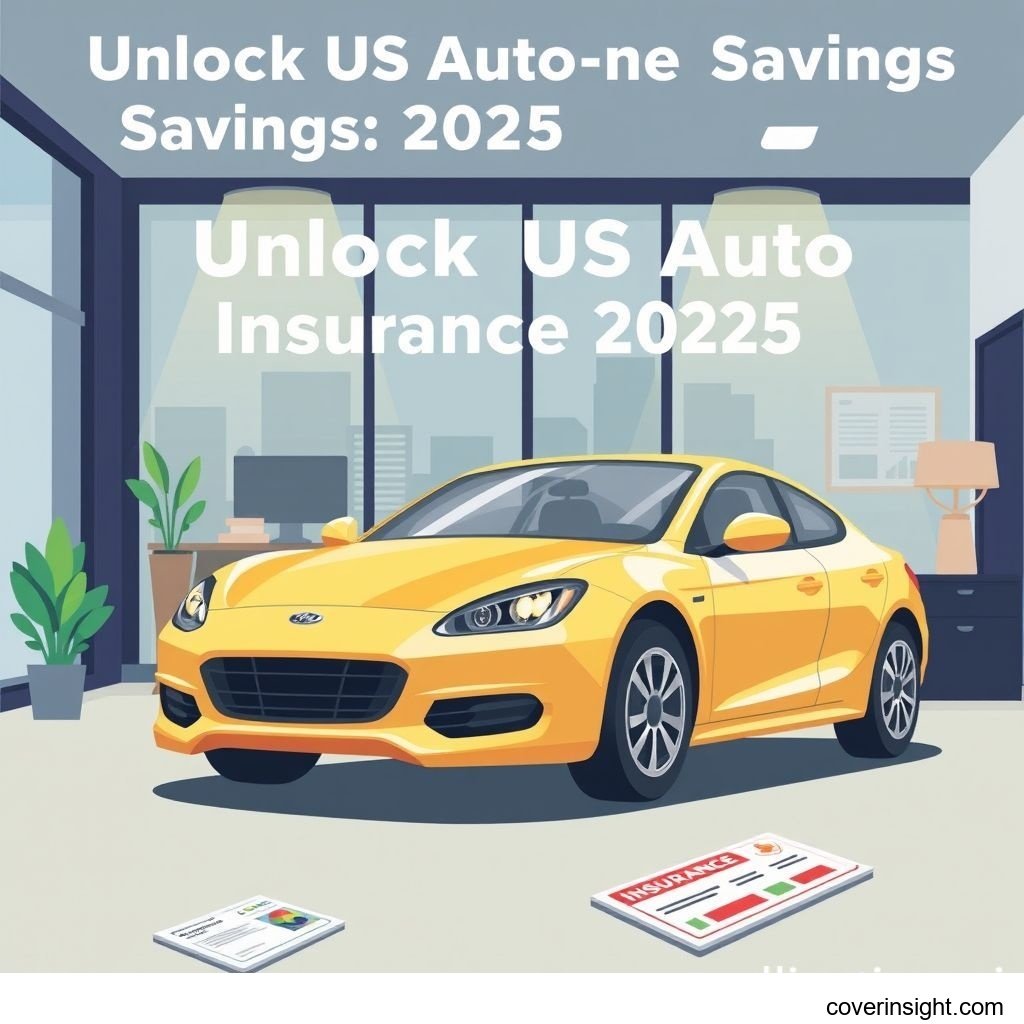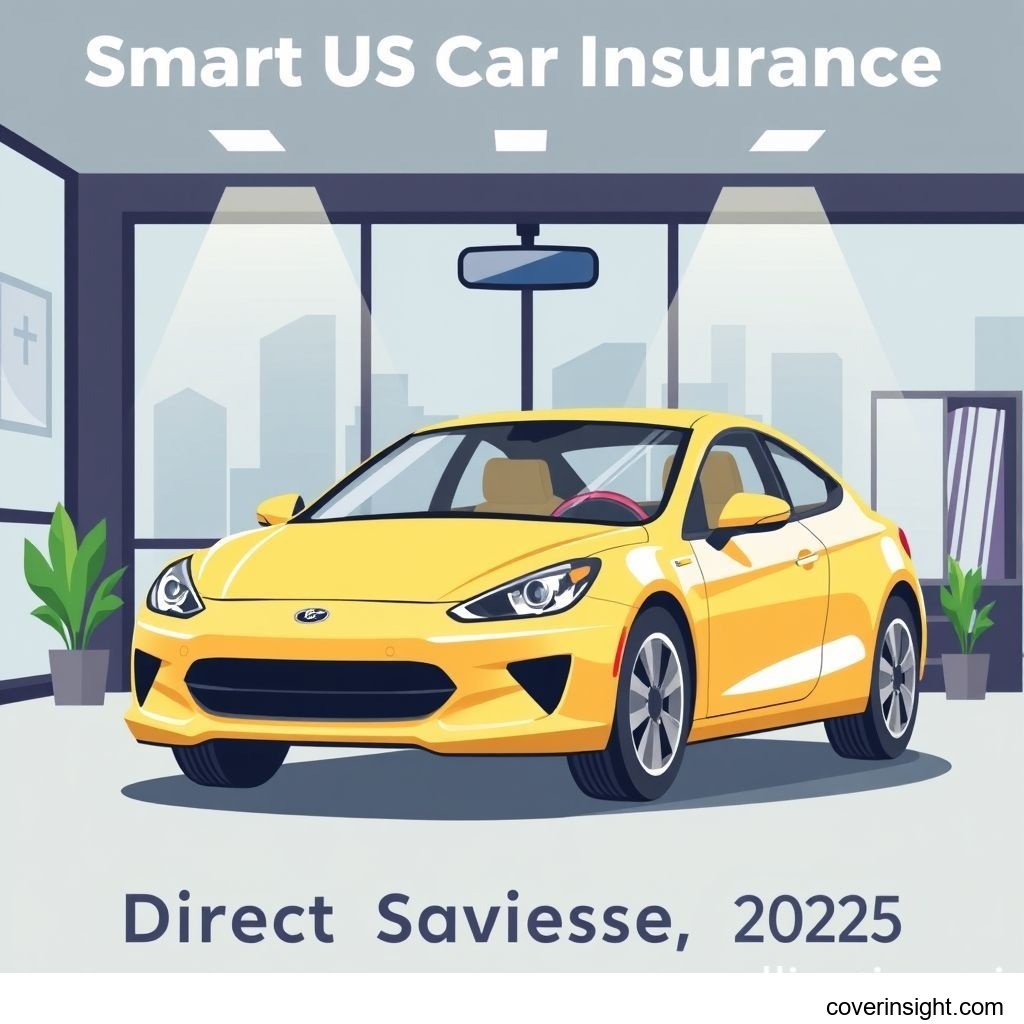US Car Insurance: Smart Savings for 2025!
Introduction
As we look ahead to 2025, navigating the landscape of auto direct insurance in the US remains a crucial aspect of responsible vehicle ownership. Direct insurers, who sell policies directly to consumers without intermediaries like agents, are becoming an increasingly popular choice for many, promising streamlined processes and competitive rates. Understanding your options and making informed decisions isn't just about ticking a box; it's about protecting your financial well-being and ensuring peace of mind on the open road. With economic shifts and evolving regulations, knowing how to secure smart savings is more important than ever.
Coverage Details
What’s Included
Typically, a standard auto insurance policy in the US comprises several key components designed to protect you financially in various scenarios. Liability coverage is foundational, covering damages and injuries you might cause to others in an accident. This is usually split into bodily injury liability (for medical expenses, lost wages, and pain and suffering) and property damage liability (for repairs to vehicles or property). Beyond this, collision coverage pays for damages to your own vehicle resulting from a collision with another vehicle or object, regardless of fault. Comprehensive coverage steps in for non-collision events like theft, vandalism, fire, natural disasters, or hitting an animal.
Many policies also include uninsured/underinsured motorist (UM/UIM) coverage, which protects you if you're hit by a driver who lacks sufficient insurance. And depending on your state, you might find Personal Injury Protection (PIP) or Medical Payments (MedPay), which cover medical expenses for you and your passengers after an accident, regardless of who was at fault.
Common Exclusions
While comprehensive, auto insurance isn't a magic bullet for every situation. Common exclusions include damage from intentional acts (e.g., road rage), wear and tear, or mechanical breakdowns. Using your personal vehicle for commercial purposes, like ridesharing or delivery services, typically isn't covered by a standard personal policy unless you add specific endorsements or purchase a commercial policy. Racing or off-roading activities are also generally excluded. Furthermore, if you lend your car to someone who isn't a listed driver on your policy and they get into an accident, coverage might be denied, or limits significantly reduced. It's always wise to review your policy documents thoroughly or chat with your provider to understand the fine print.
Cost Analysis
Price Factors
The premium you pay for auto insurance is influenced by a surprisingly wide array of factors, making it a highly personalized cost. Your driving record is paramount; a history of accidents or traffic violations will almost certainly lead to higher rates. Your age and gender (in states where gender is still permitted as a rating factor) can play a role, with younger, less experienced drivers often facing higher premiums. The type of vehicle you drive, its safety features, and the cost of repairs all impact your rate. Where you live—your ZIP code—is also a significant factor, as urban areas with higher traffic density and crime rates typically see higher premiums than rural areas.
In many states, your credit score can also affect your premium, as insurers often correlate creditworthiness with claims likelihood. The amount of coverage and deductibles you choose directly affects your price; higher limits and lower deductibles mean higher premiums. Even your annual mileage can be a factor, with less driving potentially leading to discounts.
Saving Tips
Smart savings for 2025 begin with proactive steps. First and foremost, shop around and compare quotes from multiple insurers. Don't just stick with your current provider out of habit. Many companies offer significant discounts if you bundle your auto insurance with other policies, such as home or renters insurance. Maintaining a clean driving record free of accidents and tickets is arguably the most impactful long-term saving strategy. Consider increasing your deductible; while it means paying more out-of-pocket if you make a claim, it can significantly lower your monthly premium.
Always ask your insurer about available discounts. These can range from good student discounts to safe driver programs (often using telematics devices that monitor your driving habits), low mileage discounts, or discounts for anti-theft devices. For more comprehensive guidance, useful information can often be found through resources like the "Insurance Resources Global" portal, which provides general insights into insurance markets worldwide. Also, check with your specific "State Insurance Departments" for local regulations and consumer guides that might highlight unique savings opportunities in your area.
FAQs
-
How much does auto direct insurance cost?
The cost varies wildly based on individual factors like location, driving history, and vehicle type. According to data from the National Association of Insurance Commissioners (NAIC), the average expenditure for private passenger auto insurance in the U.S. was approximately $1,286.07 in 2021. However, current estimates for 2023-2024 show this average trending higher, often well over $1,700 annually, reflecting recent increases across the market.
-
What affects premiums?
Premiums are affected by your driving record, age, gender (in some states), location (ZIP code), credit score (in some states), vehicle type, annual mileage, chosen coverage limits, and deductible amounts. Even factors like marital status and whether you own a home can sometimes play a role.
-
Is it mandatory?
Yes, auto insurance is mandatory in almost every U.S. state. New Hampshire is a notable exception, though even there, drivers must prove financial responsibility. The specific minimum coverage requirements vary significantly from state to state. Always check your state's Department of Motor Vehicles or "State Insurance Departments" website for precise requirements.
-
How to choose?
Choosing the right policy involves balancing cost with adequate protection. Start by understanding your state's minimum requirements, then assess your assets to determine if you need higher liability limits. Compare quotes from several reputable insurers, look at their customer service reviews, and weigh the benefits of different coverage types (e.g., collision, comprehensive) against your budget and vehicle's value. Don't be afraid to ask questions.
-
Consequences of no coverage?
Driving without mandatory auto insurance carries severe consequences, including hefty fines, suspension of your driver's license and vehicle registration, impoundment of your car, and potentially jail time. If you cause an accident while uninsured, you will be personally responsible for all damages and injuries, which could lead to significant financial ruin. This underscores the importance of proper coverage, a principle that extends beyond car insurance to areas like health insurance, where government resources like "Healthcare.gov" are available to help navigate options.
Author Insight & Experience: Based on my experience living in the US and having navigated the tricky waters of car insurance for years, one thing stands out: persistence pays. I remember once getting a quote that felt astronomically high. Instead of just accepting it, I called the company directly, explained my situation, and asked if there were any obscure discounts I might qualify for. Turns out, I was eligible for a "professional association" discount I hadn't even considered. It wasn't a huge amount, but it was enough to make a difference. It just goes to show that simply shopping online isn't always enough; sometimes, a quick conversation can unlock savings. For more general information on how the US insurance market functions, resources like the "US Insurance Home" can provide a good starting point.








Comments